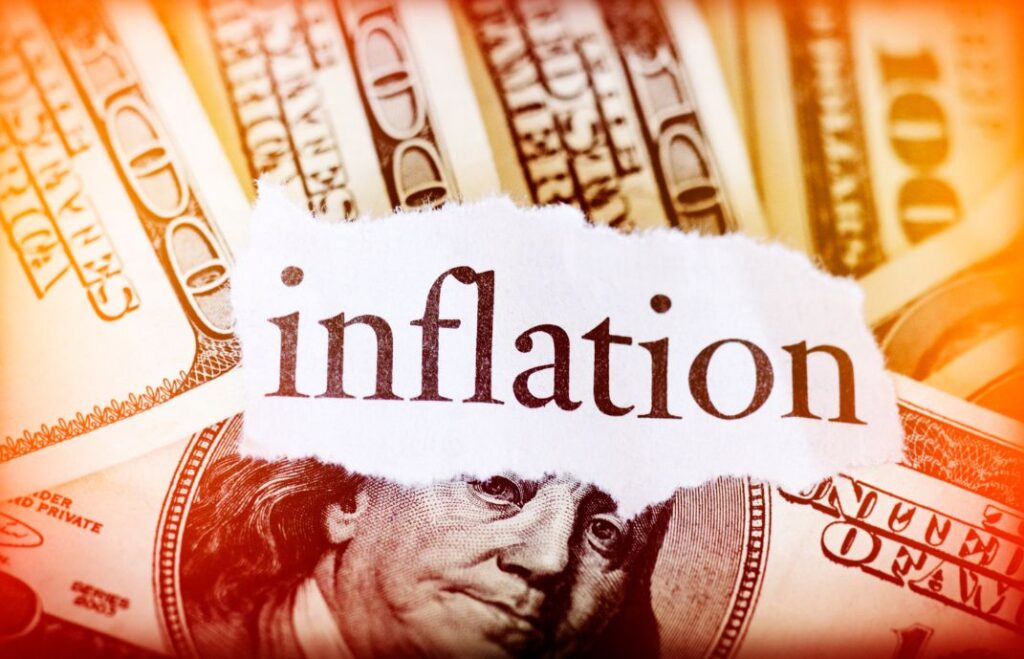|
Check out our new audio content!
Getting your Trinity Audio player ready...
|
By Rick Tobin
California just reached an all-time record median home price peak of $910,160 in April 2025, as per the California Association of Realtors. This new record state price number was more than $500,000 above the national median home price in the same month.
How much longer will home prices keep rising and home listing inventory numbers remain below historical norms, both here in California and across the nation?

In April 2025, the estimated days on market (DOM) statewide for California was listed as being as low as 31 median days on market by Redfin. The very low days on market listing number is a key factor why California home prices just surpassed all-time record highs.
By comparison, the median number of days a home spent on market in May 2025 as a listing in the U.S. reached 51 days, according to the Federal Reserve Bank of St. Louis. The median list price for U.S. home listings was $431,250 for May.
During the depths of the previous housing meltdown in California back in 2010, the median days on market was listed as 57.5 days as per the California Association of Realtors. However, the average days on market statewide for 2010 listings was listed by other sources as much longer at nearly 140 days, partly since it took several years for some listings to sell.
article continues after advertisement

California’s active home listing supply is lower today than back in 2019. Ten states are now back above pre-pandemic 2019 active housing inventory levels:
Arizona
Colorado
Florida
Idaho
Hawaii
Oregon
Tennessee
Texas
Utah
Washington
Source: ResiClub

The main exception to the low days on market rule for California home listing inventory is found in some higher price luxury home regions. For example: “San Diego County homes costing $6 million and up are taking an average 633 days to sell,” as per the San Diego Union Tribune.
All-Time Record High Listing Values
The U.S. housing market now has 500,000 more home sellers than homebuyers. What about the huge supply of distressed homes that have been in forbearance as far back as 2020? When will a larger percentage of this “shadow inventory” be added to the national home listing inventory?
After adding up another few trillion in commercial real estate listings, the combined listing values for all real estate property types do really reach all-time record highs.
There are now almost $700 billion dollars’ worth of home listings for sale in the United States, which is a new record since Redfin began tracking this data in 2012. This same study found that the total combined value of homes for sale is up +20.3% from last year.
The total number of growing listing inventory for homes for sale nationwide also had a year-over-year increase of +16.7% in April 2025, as per Redfin and NBC. However, home-sale prices still rose +1.4% over the period of 12 months by April 2025.
Please note that since home values in most metropolitan regions across the nation are likely to be at or near all-time record highs, this all-time combined record home listing number is not necessarily all negative. It just partly means that home values are much higher in 2025 than in years past.
Stale Listings and Canceled Purchase Contracts

The total “stale inventory” number (or 60+ days on the market) for U.S. home listings reached 44% of all home listings in April 2025. This was +42.1% higher than the previous year and the highest April percentage since 2020 following the pandemic declaration a few weeks prior.
There were approximately 56,000 home-purchase contracts that were canceled in April 2025 across the nation, which equals 14.3% (or 1-in-7 purchase deals) of all homes under contract for that same month.
Florida had five of the 10 metropolitan regions in the nation with the highest purchase contract cancellation rates in April 2025, as per Redfin and Newsweek.
The Top 10 Purchase Cancellation Rate Regions
1. Atlanta, GA: 20%+
2. Orlando, FL: 19.4%
3. Tampa, FL: 19.1%
4. Riverside, CA: 19.1%
5. Miami, FL: 18.9%
6. Ft. Lauderdale, FL: 18.9%
7. Ft. Worth, TX: 18.7%
8. Las Vegas, NV: 18.6%
9. Jacksonville, FL: 18.4%
10. San Antonio, TX: 18.2%
All four of the states (Florida, Georgia, California, and Texas) included in this Top 10 cancellation rate percentage list have challenging homeowners insurance issues related to both availability and rising costs.
Other factors for home purchase cancellations include rising mortgage costs and loan denial rates. A larger number of mortgage applicants these days are having to switch from conventional mortgages to non-QM or private money to qualify to purchase homes because their credit scores may be dropping and/or their debt-to-income (DTI) ratios are rising too high and exceeding 40% or 50% DTI ratios.
Real Inflation is Much Higher

Why does “real world” inflation seem significantly higher than published government inflation rates? Are your asset investments booming and/or is the purchasing power of your dollar busting?
How often do you go to a fast food restaurant and spend more than $20 per person? Can you fill up less than half of your grocery cart for less than $200 where you shop?
Between 2000 and 2025, let’s take a closer look at some of my price increase percentage estimates for homes, education, and automobiles:
* Home prices: Up 3 to 5 times in many markets.
* College tuition: Up 2 to 4 times at many schools.
* Car prices: Up 2 to 3 times for numerous car models.
When I see the federal government’s published annual inflation data that’s closer to 2% to 4%, I wonder where these economists shop. Am I shopping at the wrong stores and paying prices that seem to be more than 10% higher than last year or is the published government data not all that accurate?
Record Consumer and Government Debt

More than 12% of outstanding credit card balances are 90 days delinquent, which is the highest percentage since 2011. Delinquent student loans (in red) are rapidly rising to almost 8% as well as of the first quarter of 2025.
The Federal Reserve conducted a survey recently and asked a large pool of U.S. consumers if they had $2,000 in cash savings to cover an unexpected emergency expense using only their savings and not any credit cards.
The Fed’s survey results were as follows:
- 52% of U.S. consumer respondents could not cover a $2,000 emergency expense using only their cash savings.
- 31% of surveyed consumers could not cover a $500 cash expense.
- A record 37% of respondents described inflation as their #1 primary financial challenge.
In the first quarter of 2025, the federal debt was increasing in size by about $1 trillion every 100 days.The U.S. dollar has now lost almost 9% of its value this year, according to Barchart.
In 2024, world governments issued more debt than ever before. For example, sovereign bond issuance across the planet reached a record $18 trillion dollars in 2024, as per the Kobeissi Letter. Approximately $16 trillion was issued by developed countries like the United States, and $2 trillion by emerging market economies.
The total world government bond issuance has nearly doubled since 2019. Over the past five years, governments have issued more debt worldwide than in the eight years before the 2020 pandemic declaration.
article continues after advertisement

Wealth Creation, Leverage, and Home Appreciation
U.S. homeowners have an average net worth of $430,000 (it’s significantly higher or more than double in California for many), while renters average just $10,000.
The power of leverage for home purchases can increase the annual cash-on-cash return from 5% to 50%+, depending on the down payment invested.
It’s not just your down payment or cash equity that is appreciating each year like with stocks. Rather, it’s the total overall home value that may be leveraged anywhere between 80% and 100% LTV (loan-to-value) with a purchase mortgage.
The average retired homeowner has more than 80% of their entire net worth tied up in the equity in their primary home where they live.
If mortgage rates suddenly fall soon, will buyer demand rapidly increase to help offset the rising supply numbers? Conversely, will rising rates scare off many future buyers who may be struggling to qualify for these high home prices?
It’s more likely than not that both consumer and government debt will continue to increase in the near future. If so, our dollar may continue to weaken and inflation will keep steadily making prices less affordable for goods and services.
If you rent, inflation is not so fun as your annual rents paid may consistently increase. However, homeowners and landlords usually enjoy the power of leverage and appreciation as their overall net worth continues to grow over time.
Two exceptional hedges against inflation have proven to be real estate and gold. The main difference between these two investment choices is that you can live in homes where you can store your gold bars too.

Rick Tobin
Rick Tobin has worked in the real estate, financial, investment, and writing fields for the past 30+ years. He’s held eight (8) different real estate, securities, and mortgage brokerage licenses to date and is a graduate of the University of Southern California. He provides creative residential and commercial mortgage solutions for clients across the nation. He’s also written college textbooks and real estate licensing courses in most states for the two largest real estate publishers in the nation; the oldest real estate school in California; and the first online real estate school in California. Please visit his website at Realloans.com for financing options and his new investment group at So-Cal Real Estate Investors for more details.
Learn live and in real-time with Realty411. Be sure to register for our next virtual and in-person events. For all the details, please visit Realty411.com or our Eventbrite landing page, CLICK HERE.
Views: 35





















